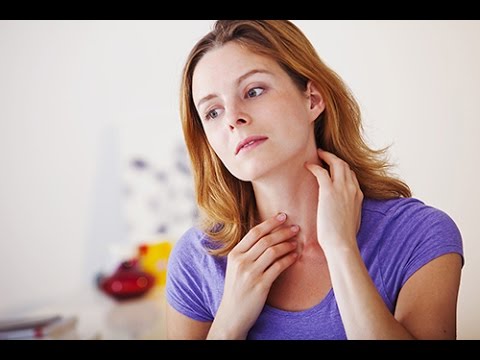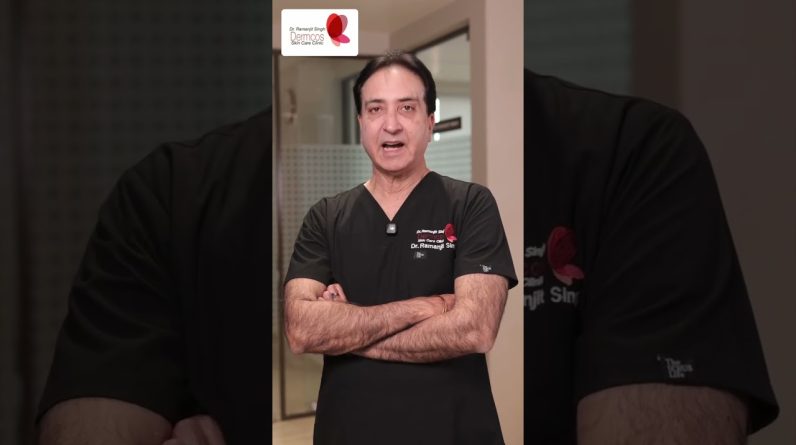Eczema in Children, Painful! is not only the rash that itches, but also the itch that rashes, because itching and suffering is no good for children.
Eczema in Children, which is not only the rash that itches, but also the itch that rashes, because itching it is no good.
This is a remarkable problem worldwide affecting between 5 and 20 % of children. it involves both genetics and environment.
So when you’re encountering a patient where there is a history of potential eczema, you want to ask not only about family history, but also about that child’s, history in terms of having both allergic disease whether they have food allergy.
Which is incredibly common in patients with eczema and up to a third and whether they have a history of asthma or wheezing that responds to albuterol that’s, also incredibly common in these patients.
So when you see eczema in children, it’s pretty easy to recognize it clinically. Here’s, a baby with pretty bad eczema.. Eczema comes from the Greek, which means “to boil over”.
Eczema in Children causes dry, itchy, papules and plaques on the skin with scale and crust, and the clinical presentation varies by age, but itchiness is fairly ubiquitous.
Infants and Eczema
So in infants, under 2 years of age, it can present with itchy red scaly crusty lesions generally on the extensor surfaces, but also on the cheeks or on the scalp.. It typically spares the diaper area and is prone to bacterial superinfection.
These kids can get bacterial cellulitis. Later in childhood. Between 2 and 12 years of age. There are fewer exudates, less of that crusting weeping stuff and they start to develop. Lichenification. Lichenification I’ll.
Show you a picture in a bit is when it’s been itching so much and it starts to thicken and they form plaques also on their flexural areas. In adulthood. It often becomes milder and maybe localized or lichenified.
It can become excoriated. Patients may have fibrotic papules and again it affects their flexural surfaces., So remember: location. At birth. We think of the face the trunk and the extensor surfaces and in the older child we think of the flexural surfaces and areas where there might be friction.
What we know about Eczema in Children is that it follows an itch-scratch-itch cycle, so patients first become very itchy and they scratch at it. That scratching of it exacerbates it and can lead them both to worse rash and the risk of infection.
Here’s, a picture of lichenification., You can see these patients have been itching at their eczema for a while, and it’s forming that plaque-like surface.. So the pathogenesis of the disease is that patients basically have some sort of epidermal dysfunction.
They have a genetic deficiency of their skin barrier function. Thus they have a robust TH2-mediated immune response to environmental antigens.. Essentially, they are tucking their own skin with their immune system.
They are failing to recognize self.. This attack leads to an alteration of the skin microbiome, which can in turn, worsen the situation.. These patients are at increased risk for cellulitis and that’s, one complication.
We have to worry about fairly frequently.. Basically, they have broken down the barrier. That is their skin, and now they are itching it which can also help organisms get underneath the superficial skin layer.
Bacterial superinfection
This is a bacterial superinfection.. The treatment to prevent cellulitis is not only oral antibiotics, but we will also have them do routine, dilute bleach baths.. These bleach baths will reduce the bacterial colonization of the skin.
Another complication of eczema in children is eczema herpeticum.. This happens more commonly in young infants, especially with their very first infection with the HSV virus, which is ubiquitous in all people. We’re talking about HSV type 1.
Most typically. Children who have an underlying eczema are at increased risk for a variety of viral illnesses, and this is unfortunately, one of them. Eczema. Herpeticum can be very severe.. These patients may present with fever and it may be life threatening.
Furthermore, if the area around the eyes is involved, as in this patient, we need an ophthalmologist involved, because it can be vision threatening as well.. We treat these patients with IV acyclovir until they’re improved, and then they typically go home on oral acyclovir, and we, of course, try to control their eczema.
Clinical diagnosis of eczema is key.. It’s, based on recognizing the rash that I’ve shown you in these pictures.. You may see some lab findings like a total plasma, IgE level that’s, elevated or eosinophilia, but the reality is.
That is not something that we typically see and isn’t very useful in the diagnosis.. If the history of the patient suggests an allergic cause to the rash, we may do skin-prick, testing or RAST testing to see if we can figure out what might be setting off their skin reaction.
If patients have very severe or frequent infections of the skin, you might consider an immune-mediated problem.. They may have immunodeficiency in addition to their eczema.. Examples of conditions like this include Job’s syndrome, which is a hyper-IgE and Wiskott-Aldrich. Eczema in Children.
Management of patients with eczema
So let’s think about the management of patients with eczema.. The most important thing to do with all patients is to make sure their skin remains well hydrated with emollients. It doesn’t really matter so much which emollient it is.
It matters only that you’re, doing it routinely.. We usually recommend patients use Eucerin or some other similar emollient at least twice a day. In patients with significant inflammation we will use topical corticosteroids.
Remember topical corticosteroids come in various strengths.. You can start with a low-strength, topical corticosteroid such as 1 % hydrocortisone, and that’s very useful, especially for the face.. Remember, higher-strength, topical corticosteroids on the face can cause problems with discoloration.
However, we will escalate the higher dose topical corticosteroids in patients with more significant asthma.. My general rule is, if you’re using a grade 4 or 5 steroid, you might think of involving a dermatologist.
We also want to avoid, like I said, those high-potency steroids on the face.. You really shouldn’t, be using those for a long time.. We will provide antihistamines for itching in these patients, which is common.
So Benadryl becomes a part of their life. A little bit. In older kids, you can use non-sedating antihistamines and again. If patients have secondary infections, we’ll use antibiotics.. We generally recommend loose clothing as tight.
Clothing is more associated with disease and we sometimes in little kids suggest they just run around the house in their underwear, because less clothing will confer less difficulty with Eczema in Children.
► THE PROF:
Your tutor is Brian Alverson, MD. He is the Director for the Division of Pediatric Hospital Medicine at Hasbro Children’s Hospital and Associate Professor of Pediatrics at Brown University in Providence, RI. He has been active in pediatric education and research for 15 years and has won over 25 teaching awards at two Ivy League Medical Schools. Dr. Alverson has extensive experience in preparing students for the USMLE exams and has test writing experience as well.Eczema in Children – Pediatrics | Lecturio
Additional Info of Eczema In Children can be found at the National Eczema Association Eczema in Children | National Eczema Association
The Eczema Diet – A Diet That’s Is Natural And Beneficial
A non-conventional way of dealing with eczema is the eczema diet. People who are not used to diet restrictions may find the eczema diet a big change. However, the diet is extremely helpful for people with eczema. In fact, it is one of the best natural eczema cures because it helps people with eczema in three different ways. One is that the diet aids the body to recover from eczema. Second, it prevents the recurrence of eczema…
Eczema Home Remedies – Tips On How to Cure Eczema From Your Home
Finding eczema home remedies can be easy. In fact, a lot of people prefer home-made eczema cures to those that are purchased in drug stores. Home-made remedies for this ailment often consists of ingredients that you can easily find in your kitchen, in your garden, in your bathroom or in your pantry.
Tips For Curing Eczema – Do-It-Yourself Remedies To Get Rid Of Your Eczema Skin Condition
Curing eczema can be a rather tedious process for those who do not know exactly what this skin problem is all about. Before you can find the right cure, you might first need to understand the ailment. Eczema in Children is basically a skin problem that can actually be caused by a number of reasons. One of the most common reasons for this skin problem is heredity. This means that you inherit this problem from your parents.
Cure Eczema Fast
In this article I am going to give you expert advice on how to cure eczema fast. This information will help you learn how to cure your eczema fast.
Eczema in Children Causes And Treatments
In this article I am going to give you expert advice on the causes and treatments of eczema. This information will help you learn the causes and the treatments of eczema.
Understanding Ways of Treating and Curing Eczema
To understand ways of treating and curing eczema, individuals first need to understand what eczema is and what causes it. Eczema is a common skin condition called atopic dermatitis. There are many forms of eczema. An eczema outbreak can cause the skin to become red, irritated and itchy. Sometimes there will be small raised bumps in the affected area. Doctors do not what exactly causes eczema, but they do know that it may be how the immune system reacts to different allergens.
Top 5 Anti Itch Home Remedy Options You Can Use for Eczema in Children
An itch can be irritating. And I mean more than just physically.
The Best Cream For Eczema
In this article I am going to give you expert advice on the best cream for eczema. This information will help to understand how to cure your eczema permanently.
Eczema And Its Causes
Eczema is a skin condition caused by a variety of factors such as gene defects, jewelry, environmental contents, soaps, moisturizers, clothing, detergents, cosmetic products, and more. However, there is an effective eczema treatment that not only can help you with the symptoms, but repair the skin as well. It is called cortisone cream; Depending on severity of your skin condition, you can buy it over the counter, or have your doctor give you a prescription for a cortisone cream that is much stronger.
How to Treat Eczema Naturally – Discover The Top 5 Solutions For Getting Rid Of Eczema Fast
Treat eczema naturally and you will find out for yourself that your condition will come off instantly. You do not have to waste thousands of bucks over medicated soaps, topical creams, and other expensive drugs to resolve your problem. Eczema, an inflammation of the skin, can bother you a lot. It does not only make your skin look noxious, but it can really be itchy. Sometimes you can’t help but scratch it off your skin.
Eczema in Babies and Infants
Some children are allergic to cow’s milk. Breast feeding, as ever is the best way to bolster your child’s immune system and may actually reduce the occurrence of eczema as the mother’s antibodies, passed on through her milk, may immunize him against eczema or at least reduce his susceptibility.
Symptoms and Signs of Eczema
Eczema can manifest on many parts the body and be hereditary or caused by allergic reaction, find out what causes eczema and get some tips for eczema treatments. Why not solve the problem now?
Contents








